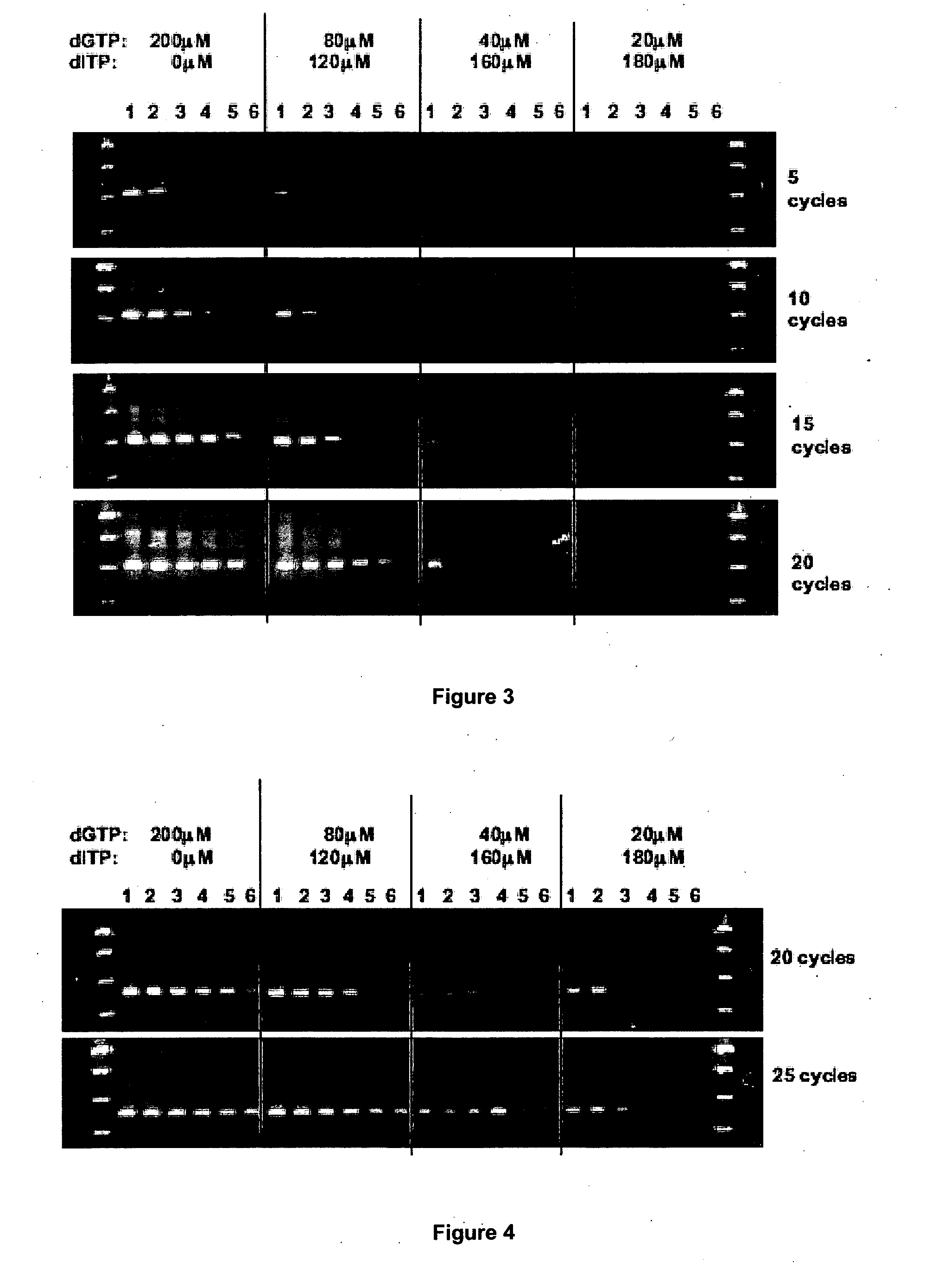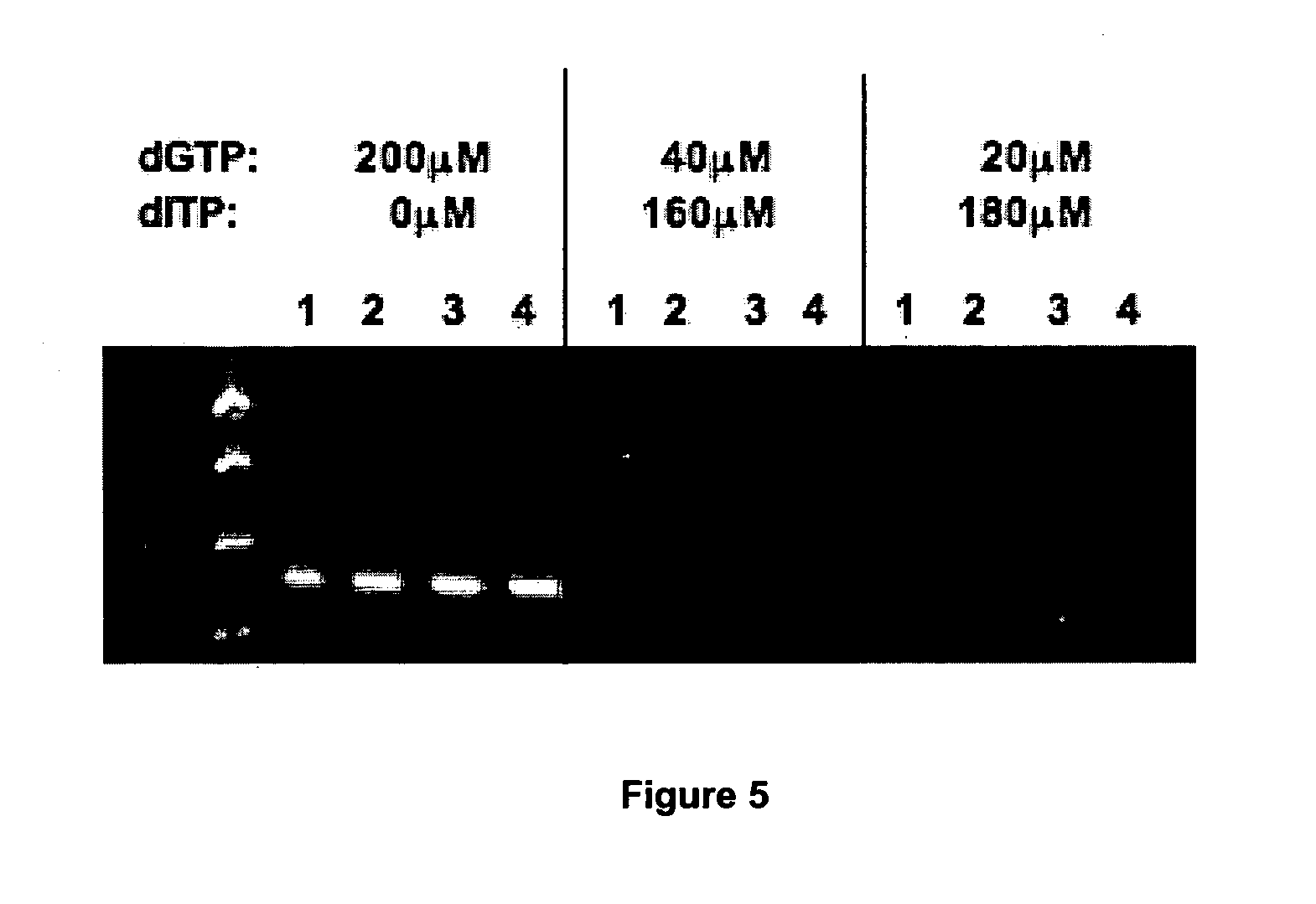Elimination of contaminants associated with nucleic acid amplification
a technology of nucleic acid amplification and elimination of contaminants, which is applied in the field of elimination of contaminants associated with nucleic acid amplification, can solve the problems of nullifying data, increasing cost and effort, and affecting the effect of repeating experiments, so as to eliminate the problem of carry-over contamination of amplification reaction
- Summary
- Abstract
- Description
- Claims
- Application Information
AI Technical Summary
Benefits of technology
Problems solved by technology
Method used
Image
Examples
examples
In order to demonstrate the present invention inosine has been used as a representative non-natural base suitable for the present invention.
Methods and Reagents
Chemicals were obtained as follows: Ethanol from Aldrich (St. Louis Mo.; 200 proof E702-3); Isopropanol from Sigma (St. Louis Mo.; 99%+Sigma I-9516); Mineral oil from Sigma (M-5904); Quinol from BDH (AnalaR #103122E); Sodium acetate solution 3M from Sigma (S-7899); Sodium chloride from Sigma (ACS reagent S9888); and Sodium hydroxide from BDH (AnalaR #10252.4X); Sodium metabisulphite from BDH (AnalaR #10356); Diethyl ether from Sigma (St. Louis Mo.; 309958); Hexane from Sigma (St. Louis Mo.; 650420); Luria broth from Oxoid (Liverpool; CM0996B); Magnesium chloride from Sigma (St. Louis Mo.; 63069); Mineral oil from Sigma (M-5904); Potassium chloride from Sigma (St. Louis Mo.; 60142); Span 80 From Fluka (Buchs CH; 85548); Tetracycline hydrochloride from Sigma (St. Louis Mo.; T8032); Triton X-100 from Sigma (St. Louis Mo.; 93426)...
PUM
| Property | Measurement | Unit |
|---|---|---|
| Temperature | aaaaa | aaaaa |
| Temperature | aaaaa | aaaaa |
| Temperature | aaaaa | aaaaa |
Abstract
Description
Claims
Application Information
 Login to View More
Login to View More - R&D
- Intellectual Property
- Life Sciences
- Materials
- Tech Scout
- Unparalleled Data Quality
- Higher Quality Content
- 60% Fewer Hallucinations
Browse by: Latest US Patents, China's latest patents, Technical Efficacy Thesaurus, Application Domain, Technology Topic, Popular Technical Reports.
© 2025 PatSnap. All rights reserved.Legal|Privacy policy|Modern Slavery Act Transparency Statement|Sitemap|About US| Contact US: help@patsnap.com



